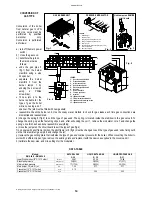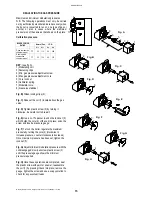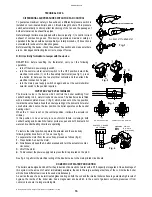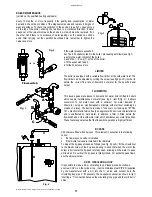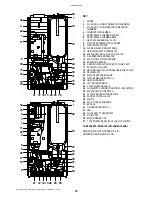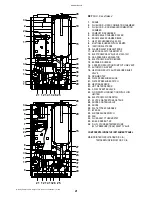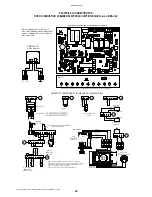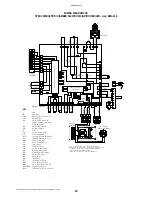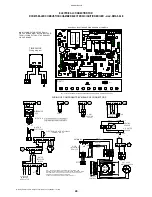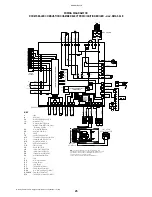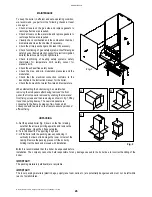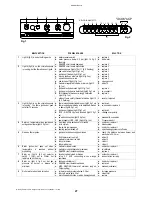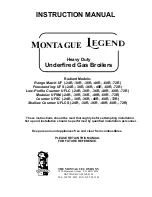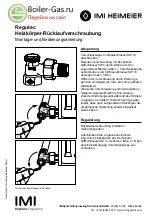
Installation Manual
Wall Hung Boiler with D.H.W. Storage Cylinder Low Nox – Cod. 99881NA – July 2001
10
ELECTRICAL CONNECTIONS
The boiler works with 230 V 50 Hz AC current and has
maximum input of 170 W. Connection to the electrical
mains must be performed with a device having an
omnipolar opening of at least 3 mm. Make sure the live
and neutral connections conform to the diagram. A secure
earth connection is compulsory.
IMPORTANT
If you need to replace the power supply cable, use cable having
the same characteristics: (HO5 W-F) 3x1 with maximum
external diameter 8 mm.). Connect to the terminal block located
in the instrument panel as follows:
A. Turn off the electrical power supply at the mains.
B. Remove the boiler front casing in the direction of the arrows
(see fig.1).
C. Undo the two side screws on the instrument panel using the
CV screwdriver and pull down the cover (see fig.2 ).
D. Make the following connections:
•
connect the yellow/green wire to the terminal marked with
the earth symbol “ ” (see fig.3).
•
connect the blue wire to the terminal marked with the letter
“N”.
•
connect the brown wire to the terminal marked with the
letter “L”.
CONNECTION OF ROOM THERMOSTAT
NOTE
: use class II room thermostats only.
The thermostat wire must not be placed in the channel
containing high tension wires, but must have its own line
The room thermostat lead must not exceed 50m n length;
minimum section 0.5 mm.
Connection
: after carrying out the operations described
on page 15, proceed as follows:
A. Insert the room thermostat lead into the entry point
on the electrical control box along with all the other
leads on the boiler.
B. Move the bridge PT (see fig.4) from terminal TA to
the free one next to it.
C. Insert the thermostat wires (fig.5) one in terminal TA
and the other in the one next to it occupied by bridge
PT which you have just moved.
If a timer is fitted as well as a room thermostat, carry out
the electrical connections for the timer according to the
indications in figures 6-7.
L
N
OR
TA
TA
OR
TA
N
L
4 3
2 1
5
M
4
5
1
2
3
M
N
L
BROWN
YELLOW-GREEN
BLEU
re
d
ye
llo
w
bl
ue
br
ow
n
re
d
ye
llo
w
bl
ue
br
ow
n
Fig. 1
Fig. 2
Fig. 3
Fig. 4
Fig. 5
Fig. 6
Fig. 7
Summary of Contents for RMA
Page 2: ......



















